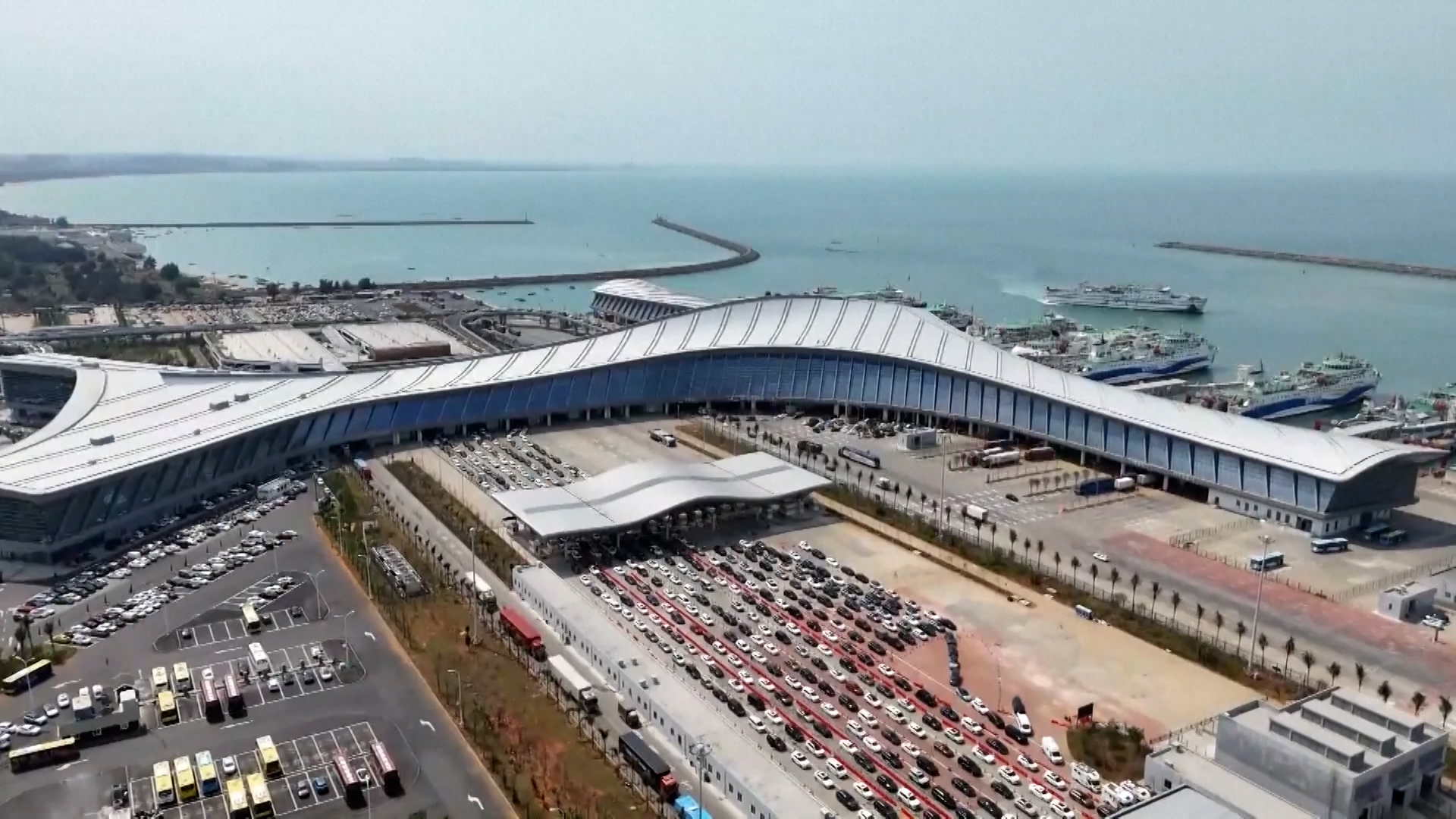China’s Shifting Strategies: Military Power, Space Ambitions, Economic Reforms, and Global Relations
Military Insights: An Updated Look at China's Armed Forces
China's recent military parade showcased the country's advancing technological capabilities and evolving force structuring strategies. An article from Sina highlighted the introduction of new military equipment, such as advanced combat machines and the integration of the latest technologies in training exercises. The coverage emphasizes a strategic shift towards a structure that mirrors realistic combat scenarios. Speculation on the international stage considers this demonstration not just as a boost in domestic military pride, but as a message of strength and readiness to foreign powers.
Sina's narrative reflects a focus on detailed military preparedness and places a spotlight on homegrown advancements, possibly aiming to galvanize national sentiment as well as projecting power externally. This aligns with China's long-term strategic goal of modernizing its military, capable of securing national interests in increasingly complex geopolitical climates, notably in the South China Sea and Taiwan Strait.
Soaring with Success: China's Commercial Space Ambitions
China's commercial space sector is making significant strides, as highlighted in an article from CCTV, with the successful launch of the Long March rockets demonstrating its growing capacity in the international satellite market. This time using the "One Rocket, Seven Satellites" approach, China's execution involved launching satellites from several countries, underscoring China's rapid progress in its space endeavors.
CCTV's coverage leans towards amplifying China's ambition of leading the global space industry, emphasizing the growing cooperation with countries like Mexico. This expansion reflects a broader national strategy to position China as a key player in space exploration and technology, offering international services and partnerships that showcase its technological prowess and navigation of the complex geopolitics space entails.
The ripple effect of this expansion influences global markets, heightening competition while also paving the way for international collaborations. As China accelerates its space agenda, it has the potential to redefine norms in global commercial satellite launches as nations increasingly turn to China for reliable, cost-effective space solutions.
Open Sports Policies: Reforming the National Athletic Framework
Sina and CCTV reported on China's new sports policies aimed at reforming and expanding its national athletic programs. An emphasis on opening up and diversifying the sports sector is made evident through the new strategic document, "Guidelines for Cooperation and Development of National High-Level Teams," which calls for increased shared management and transparent governance in athletic events.
Both articles note the introduction of systems to resolve existing challenges like management ambiguities and performance evaluation inconsistencies, aiming to bolster China’s competitive edge in future international competitions, including the Olympics. With these reforms, China is striving to cultivate a more vibrant, inclusive sports environment that leverages a variety of societal sectors to optimize national team performance.
Sina's report focuses on the benefits of innovative collaboration models for broader engagement, reflecting a drive to align sports administration with other global powers through systemic transparency and inclusivity. Concurrently, CCTV accentuates the strategic involvement of multiple governmental and private entities as a means to invigorate China's overall athletic prowess. This policy shift is poised not only to redefine China’s internal sports dynamics but also to strengthen its stature and competitiveness on the global stage.
Enterprise Loan Cost Transparency Initiative
The news article titled “从‘开盲盒’到‘明白账’ 中央银行试点推动企业贷款成本全透明” from Xinhua highlights the People's Bank of China's initiative to increase transparency in enterprise loan costs. The initiative aims to reduce hidden charges by mandating the use of a “loan clarity paper.” This tool requires banks to specify every cost associated with a loan, broken down into understandable terms for enterprises. Companies have responded positively, as evidenced by a testimony from a small enterprise manager in Jinjiang, who discovered hidden costs when using intermediated loans versus loans directly secured by residential mortgages. This change is driven by a pilot program active in several provinces, reflecting China's ongoing efforts to streamline financial processes. While it highlights greater loan cost transparency, the broader implication is improving credit access for SMEs, a crucial part of China's economic strategy.
Tax Reporting and Compliance for Internet Platforms
Another significant economic directive reported by Xinhua involves taxation compliance for internet platform enterprises. The State Taxation Administration announced that relevant platform companies need to report basic information to ensure fair tax compliance. This policy is part of a broader regulatory emphasis on bringing clarity and accountability to e-commerce actors within China. By actively managing these platforms, the government aims to ensure a more consistent tax contribution, stabilize fiscal revenues, and level the playing field for domestic and international competition.
Personal Pension Optimization in China
In pension policy, Xinhua reported enhancements to personal pension systems making the retirement savings scheme more accessible. The updates will offer more withdrawal options and application channels starting September. By enhancing flexibility, the government encourages wider public participation, possibly alleviating long-term demographic pressure on state pension funds. This development aligns with China's broader social security reforms designed to provide economic stability and encourage domestic consumption.
Investment in A-shares Despite Market Volatility
The stability of the Chinese stock market was examined in Xinhua’s analysis of A-shares valuation. Market fluctuations exhibit varying performances across sectors, with tech and consumer industries witnessing significant growth. Institutional investors might be influencing these disparities, suggesting underlying confidence in China's economic resilience. The article argues that despite the high valuations in some sectors, the overall market remains reasonably attractive, likely due to investor expectations of enduring liquidity and policy support.
Stability of Loan Prime Rates
Xinhua also reported on the stability of the Loan Prime Rates (LPR), which remain unchanged. This consistency keeps borrowing costs favorable, spurring economic activity amidst global uncertainties. The maintenance of historically low rates reflects a cautious approach to fostering domestic economic robustness while managing inflation expectations. This policy is particularly relevant to international investors assessing the risks and opportunities within China’s economic landscape.
Booming Summer Tourism Drives Economic Activity
Lastly, Xinhua explores the resurgence in summer tourism and its cascading effects on peripheral industries. Theme parks and cultural sites are drawing record crowds, boosting nearby hospitality and retail sectors. This surge not only highlights significant recovery post-pandemic but also underscores tourism's role as a spark for local economies. This theme is pertinent as China leverages domestic tourism to offset declining international revenues due to geopolitical strains.
Europe's Balance Between Great Powers
The New York Times Chinese edition covers the intricate dynamics of European leadership as they interacted with figures like Trump and Putin, and weighed on Ukraine's future. The narrative hints at Europe's challenge in balancing relationships with the U.S. and Russia. Given the complex geopolitical present, European countries find themselves caught between maintaining a strong transatlantic alliance and addressing inherent regional security issues. These tensions underline a broader strategic recalibration amidst escalating U.S.-China competition.
Korean Peninsula Tensions
According to a report by Xinhua, North Korean official Kim Yoojung criticized South Korea's foreign policy. The story reveals North Korea's consistent portrayal of South Korean actions as deceptive and aggressive, stressing the portrayal of the U.S.-South Korea joint military exercises as provocative. This bears significance as North Korea seeks to undermine South Korea's diplomatic stance, while the article's tone suggests a narrative aiming to fortify North Korea's position amid regional power disputes and ongoing negotiations.
Middle Eastern Ceasefire Calls by the U.S.
Xinhua, in another dispatch, highlights U.S. diplomatic efforts in the Middle East, reported via visits to Libya by U.S. envoy Thomas Barrack. The envoy's attempts to urge for ceasefire adherence reflect the U.S.' continued endeavor to mediate peace in the region. This highlights America's attempt to balance its waning influence with proactive diplomatic strategies in volatile geopolitical areas.
Trade Frictions: Canada-China Dynamics
As reported by Tencent, Canada faces a trade row with China over canola imports, with China imposing protectionistic measures. This reflects ongoing trade tensions, exacerbated by China's tactics to counter perceived economic threats and Canada's reliance on Chinese markets. Such bilateral economic conflicts indicate a wider global pattern of trade disputes as countries recalibrate their international economic policies in response to broader geopolitical trends.
Shifting Monetary Policies and AI Embrace
The United Daily News article covers the Federal Reserve's stance on AI and cryptocurrency regulation. There's a clear pivot towards embracing technological advancements, reflecting a crucial shift in ensuring stability while potentially strengthening financial systems against cyber risks. This resonates beyond U.S. borders, hinting at imminent global financial regulatory changes to accommodate AI-driven innovations.
India's Economic Strategies in International Trade
Sina covers the U.S.'s concerns over India's sourcing of Russian oil. U.S. Treasury's remarks touch upon India's increasing import volumes amid sanctions. The shutdown of talks on a lower tariff trade agreement reveals frictions between integrating India's burgeoning economic strategies with Western diplomatic expectations.
China-Pakistan Military Dialogue
The Chinese Foreign Ministry documents China-Pakistan military discussions, stressing nuclear non-proliferation. The dialogue reflects China's broader push towards maintaining regional influence and its nuanced approach towards fostering South Asian strategic partnerships, crucial in light of U.S. interests in the region.
India-China Boundary Discussions
Sourced from Qiushi Journal, India-China boundary talks have achieved ten points of consensus, highlighting progress while underscoring the persistent disputes. The positive narrative indicates an effort to manage regional stability through engagement, offering a contrast to the usually contentious rhetoric surrounding border issues.
U.S. Domestic Economic Concerns
Sina reports domestic criticism of the Federal Reserve's policy from President Trump, highlighting Trump's discontent with current housing market effects due to interest rates. This internal critique reflects the tension between economic policy impacts and political leadership, against a backdrop where economic narratives intertwine with domestic and international strategy.



